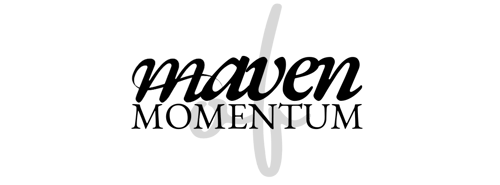Redefining Copywriting and Storytelling
I recently had the pleasure of catching up with fellow Conscious Marketing Movement Community member, Check Odulio.
Drawing on 16 years of corporate sales and marketing expertise, Check seamlessly pivoted to become a sustainability copywriter and blogger, establishing Chasing Eco in 2023.
In this Q&A-style interview, Check highlights the importance of non-violent communication, accurate sustainability messaging, and positive language to empower customers.
Check's approach challenges traditional tactics, aiming to create marketing as a force for good.
Enjoy!

Can you describe your approach to conscious marketing and eco-copywriting?
I call my style green-conscious copywriting, which is ideal for sustainable businesses like zero-waste brands, sustainable toys and green creatives. It integrates conscious marketing concepts, green communications, and positive persuasion.
Let’s break down each part.
Conscious marketing promotes non-violent communications. It means moving away from manipulation. Traditional copywriting often leverages our fears, pains, regrets, and insecurities. They often leverage our fears, fear of missing out, pains, regrets, and insecurities. Some examples are “don’t miss out”, this is your last chance, 1 spot left, and you’ll regret not buying more, etc. We consider these as violent communications.
The next part is Green Communications which is guided by standards like FTC Green Guides or EU Green Claims Codes to help us communicate sustainability the right way. There’s what we call Greenwashing which misleads customers about a company’s sustainable claim. Saying you’re eco-friendly is not enough. There are certain words that we have to avoid like eco-friendly, sustainable, good for the planet, and 100% natural. We have to provide valid proof and substantiate our claims. Otherwise, it becomes misleading, tricking your customers whether intentionally or unintentionally. So if you’re a sustainable and green business, there are so many things you need to say and build content around to avoid greenwashing. Plus there’s a lot of industry jargon and sciences that come with communicating sustainability. It can be complex to find effective messaging that conforms with the standards. But it’s something we need to give high importance to as it can affect customer trust and can have legal implications too.
Lastly, we have the positive persuasion. Instead of scaring our customers with fears making them feel bad about themselves or their situations, or pressuring them to make hasty decisions, we persuade them through a positive approach and language. Our communication goal is to empower our customers to make informed decisions. We promote and spread values that would change our customers and eventually our society, their mindset and behavior.
How did you develop your unique approach to sustainable and ethical business marketing?
I believe that there’s a long unaddressed need for it. For decades, we believed that there’s only a specific way of doing marketing and copywriting. And it involves the traditional way of doing things. This is what has been taught to us in the university, online courses, and gurus. If you want to make a memorable marketing campaign or effective sales-generating copy you have to use certain tactics. I questioned myself, is this the only way? Cause these tactics don’t resonate with the values we say we have as sustainable and ethical businesses. So I read a lot, studied, and researched different alternative approaches until I found our Conscious Marketing Movement Group which believes in the same thing - that we can do marketing as a force for good.
What are some of the key principles or guidelines you follow in your eco-copywriting that someone in the creative or wellness industry could also consider?
-
Create content to help your ideal customers with their journey on whatever it is that you are trying to solve for them.
-
Don’t communicate just to sell, engage even when they don’t buy or have already bought from you or others.
-
Be truthful and honest in your messaging
-
Use positive language that sounds like you
-
Reflect the values you stand for
-
Move away from the usual marketing and copywriting tactics I’ve mentioned earlier. They are so overused that they start to sound like cliches that don’t appeal anymore. It makes your brand sound like everyone else.
How do you balance the need to be persuasive with the desire to use non-scarcity style language in your copywriting?
Use positive language in trying to persuade. Sometimes there’s a need to make your copy longer but what’s more important is that it would reflect and foster values that align with your brand.
Instead of saying “There are only 2 slots left!” which makes use of scarcity, fearing it would run out, we can say “We still have room for you, and we’d love for you to join.” This version reflects the value of abundance and inclusivity. Plus it makes you sound different thereby making your customers less desensitized to your messaging.
What impact do you believe conscious language will have on customer behaviour in the future?
I believe that the hyper-consumer society we are now is the product of marketing decades ago. Similarly, how we do our marketing and copywriting now shapes the kind of society and the world at present and future.
To Sum Up…
By advocating for positive messaging that empowers customers, ensuring honesty and authenticity in communication, and challenging conventional tactics to create marketing as a force for good, Check aims to drive meaningful change in the industry and positively influence customer behaviour towards more sustainable and ethical choices.
To learn more about Check’s work you can visit her website, or follow her on LinkedIn where she shares invaluable copywriting tips and strategy.

 By
By

